Let’s start this article off with the definition of transitional kitchens. Hmm, well transitional kitchen design can be hard to define! In fact, that’s part of its charm, and many would say, that’s the whole point. Transitional design can’t quite be pinned down for definition purposes, nor can the tastes of those who skew toward it. However, there are a few things that transitional kitchens are not. “Old Timey”, is one of them. Sure, transitional kitchens might use some more traditional design elements. However, most transitional kitchen projects have functionality and ingenuity at their forefront.
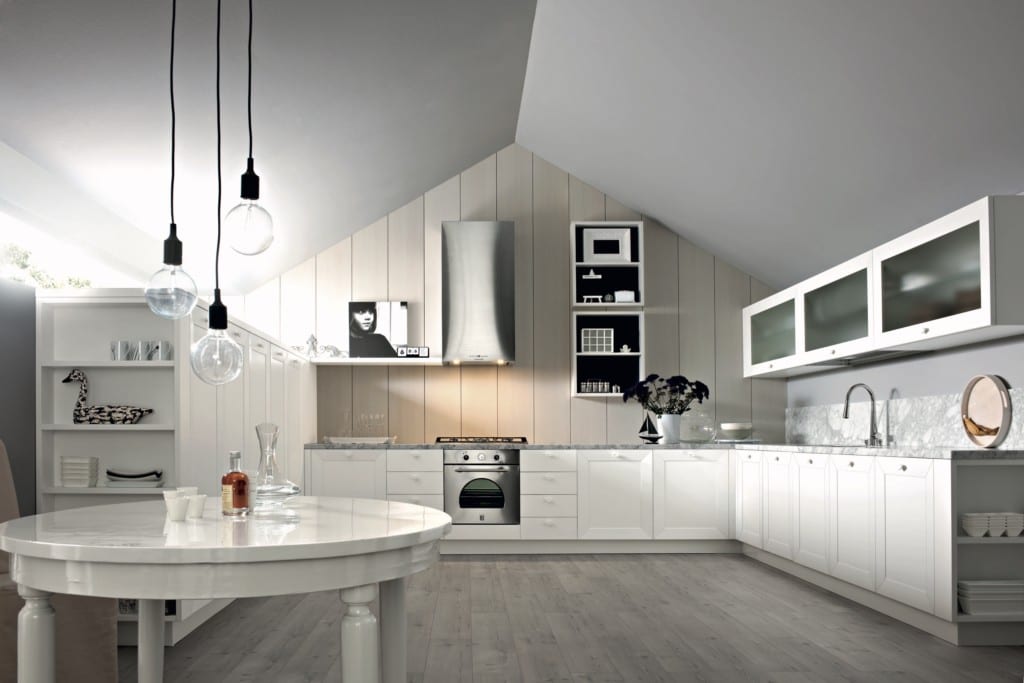
Transition Of Old Into New
Transitional kitchen design is basically a blending of many more straightforward tastes to come up with something new that’s eclectic, doesn’t quite follow the rules, but when done well, can be totally fabulous. They are hence just what they sound like. They’re somewhere in the middle – a transition between a modern and a traditional kitchen design. This eclectic, modern yet timeless and classic style in your kitchen is growing more and more popular every day. So, how can you get this transitional look in your kitchen? Here are some tried and true tips from our kitchen design experts, who have specialized in transitional kitchen design for over a decade.
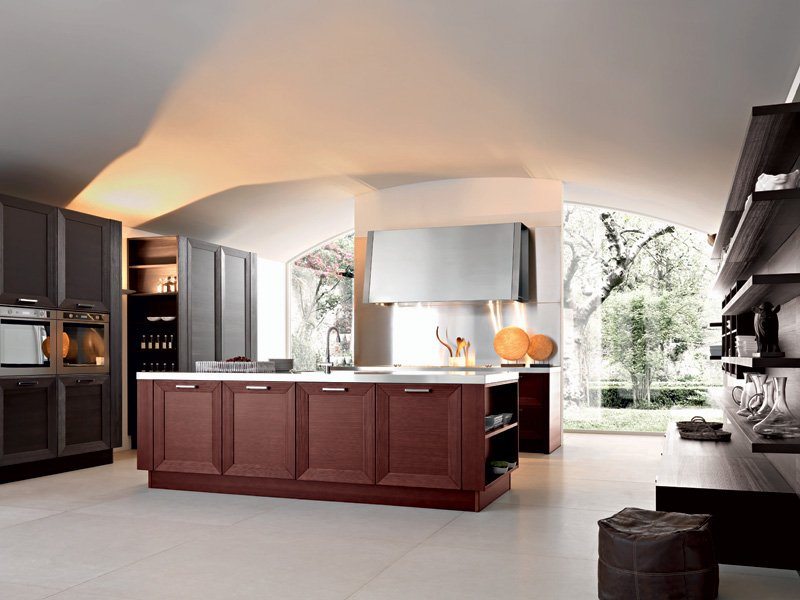
Transitional Kitchen Design Materials
Transitional kitchen design is all about mixing kitchen styles and materials in a new, innovative yet warm and welcoming way. Though more straightforward design might stick to either wood or stainless steel, transitional design often uses them both — and the mix is breathtaking. As you can see in our transitional kitchen design projects, some designs will use a group of vastly different materials — from concrete to wood to tile to steel — to create one overarching look that is layered in its style and meaning. Be open to what’s around you and think about how you could incorporate different items and elements — even those that wouldn’t traditionally be in the kitchen — into your new transitional kitchen design. Chalkboard surfaces, for example, which are often thought of as something for a school room, are gaining popularity in kitchen design as a fresh, interesting way to share messages or make lists.
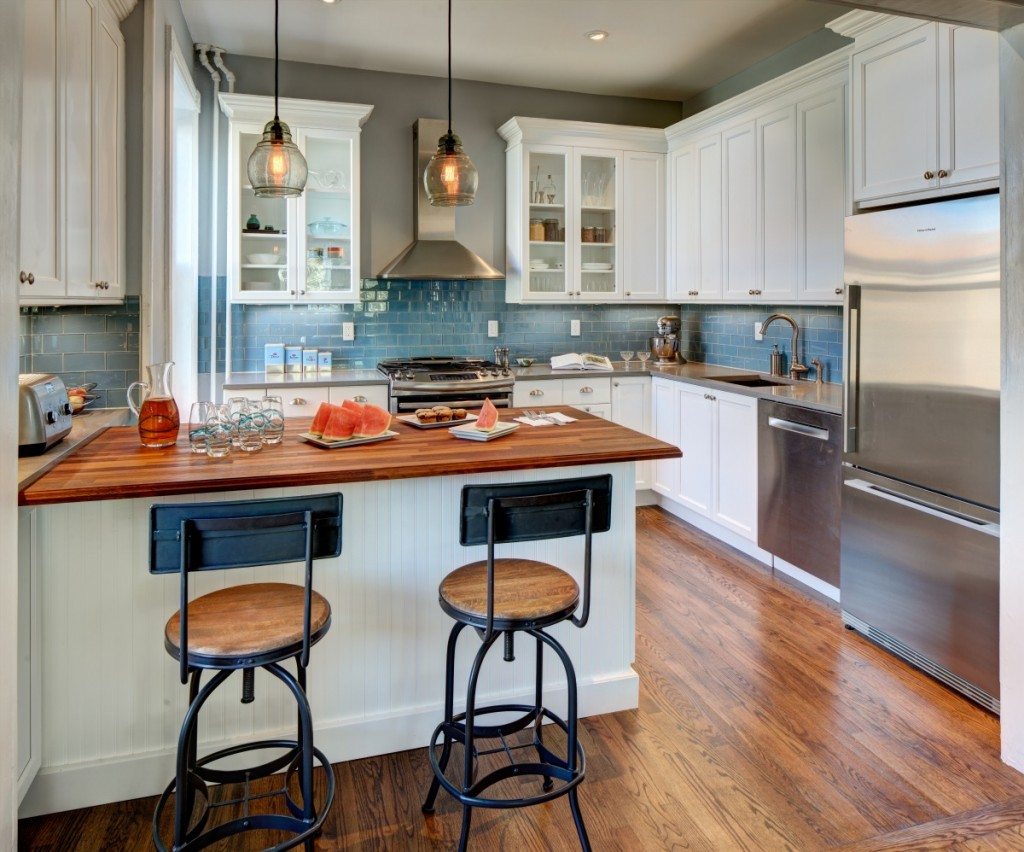
Modern Meets Traditional Style Cabinetry
Most transitional kitchen designs create a layered, calmly erratic look by combining traditional and modern kitchen design elements. Of course, there can be anything in between in there, too. When mixing modern kitchen design elements with traditional kitchen features to create a transitional kitchen style, most designers tend to opt for a neutral color palette in varying shades of browns and tans. Transitional design is all about creating a timeless yet modern look, and neutral color schemes do a good job of fulfilling this criterion by not dating themselves. Of course, no one is suggesting you eschew color altogether. A pop of color here and there can go a long way. By and large, though, neutral color schemes are best for transitional kitchens.
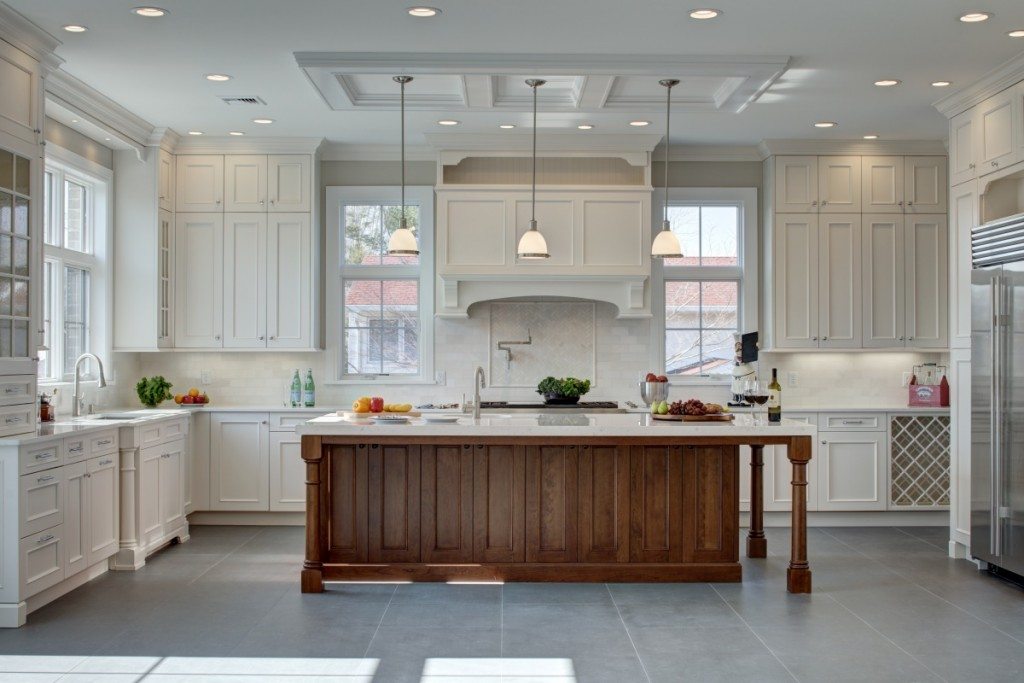
Sleek Transitional Cabinetry
Sleek cabinetry is what we are looking for in transitional kitchen design, yet not too sleek to differentiate itself from modern style cabinetry. You don’t want to go too modern here to maintain the transitional, but you probably should stick more on the modern side than the traditional side for it to be perceived as transitional. Most transitional kitchen designers suggest keeping the cabinetry low-key in general. By not going too traditional — which is characterized by intricate features — you lessen the risk of your cabinetry being too apparent in the design. However, most modern kitchen design would use a lacquer or glass for the custom cabinetry, and transitional designers aren’t suggesting you go that far. Doing something that’s a more modern style but that perhaps uses wood, which is a traditional material, is very transitional in design and hence exactly what we are looking for when designing your transitional kitchen project. Tile, concrete, cork, and wood are all common kitchen materials. Switch up how you use them. Concrete is gaining popularity for kitchen countertops, but it can be used in other applications too. A concrete backsplash or a wooden countertop could give a totally different look than a traditional concrete countertop with tile backsplash. Think outside of the box!
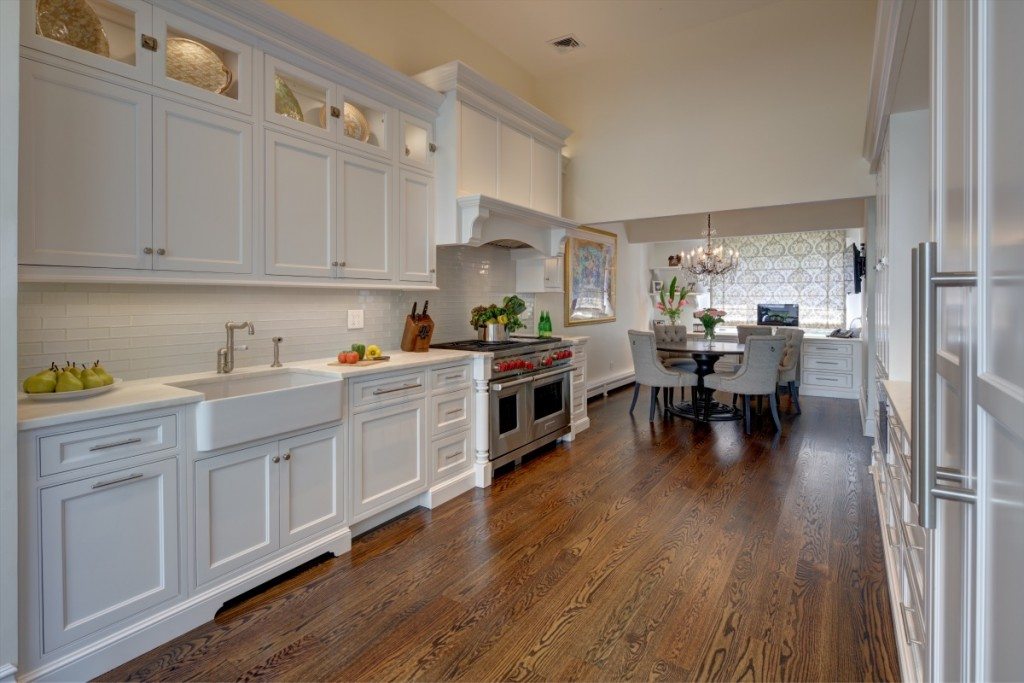
Visual Intrigue And Cabinet Colors
Though the cabinets are usually low-key and the cabinet colors often neutral, transitional kitchens are anything but boring. Transitional designers suggest using focal points, splashes of color, and varied textures to create a kitchen that is layered in its visual intrigue. By mixing focal points, colors, and textures along with using a variety of materials in one space, the overall look should feel rich in its variation while also creating a cohesive feel. Transitional kitchen style is for the creative, happy-to-try-things, ready for decorative adventure types among us. It may take some trial and error and embracing some risks to land on something that’s really outstanding and original. Have a look at our transitional kitchen projects to develop an even better understanding of this fascinating mix of modern meets traditional.

New And Old Design Elements
By its very nature, transitional design involves mixing two unlike things to make something new and in-between, a so-called “in transition” style . Have a look at our high-end transitional kitchen portfolio to become more familiar with this kitchen style. Modern kitchen design embraces brand new design features, while traditional kitchen design tends to borrow elements from ancient times to create a warm, classic feel. When you’re working with transitional design, you’ll want to use both modern and classic design elements. This could mean mixing antiques with technology, mixing an old table with modern chairs, or any other mix-and-match scenario. The most inviting thing to many people who use transitional kitchen design is the lack of rules. You can really do anything you want!
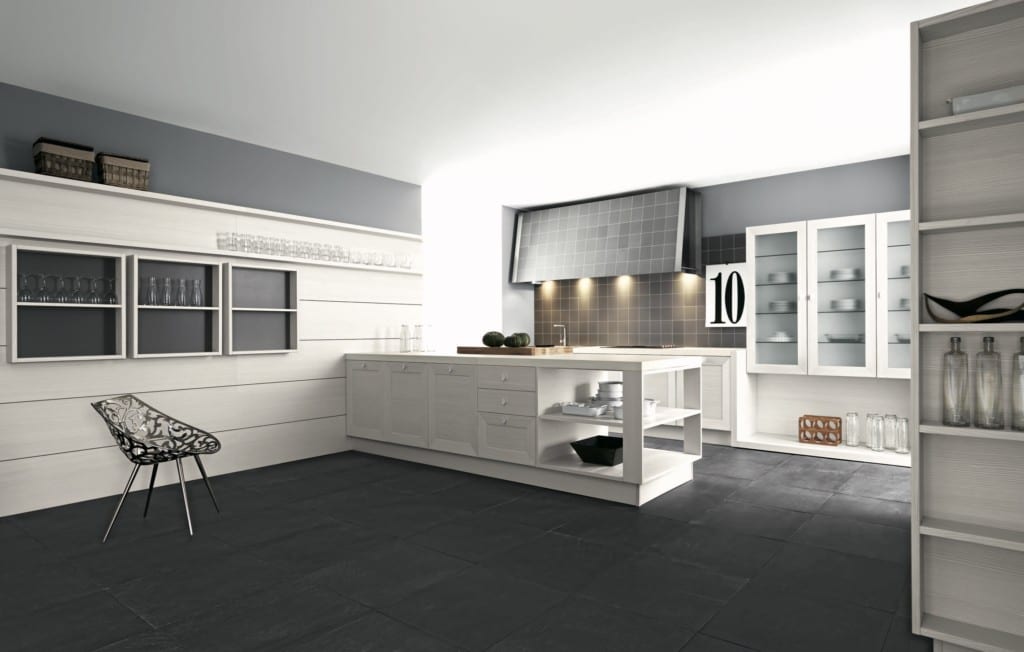
Don’t Be Afraid!
Transitional style is all about coming up with something new that’s your own. Don’t get too worked up about how things “should” be — just go for it and create something that you think is great. By trusting your instincts and going for it, you might discover something really innovative and great that suits your needs and adds a great splash of style to your home. The key to creating something really interesting in transitional design is mixing styles — and eras. Create an eclectic look by mixing eras in your fixtures. Taking the skeleton of one style and using the material of another style is a great way to incorporate different looks into a transitional kitchen space. Modern materials on traditional style furniture, for example, or stainless steel for a sink that uses a country farmhouse style, would be another idea. Mixing ideas and inventing new approaches is the name of the game when coming up with a transitional design, so don’t be afraid and reach out to our Modiani kitchen designers should you need some inspiration.
